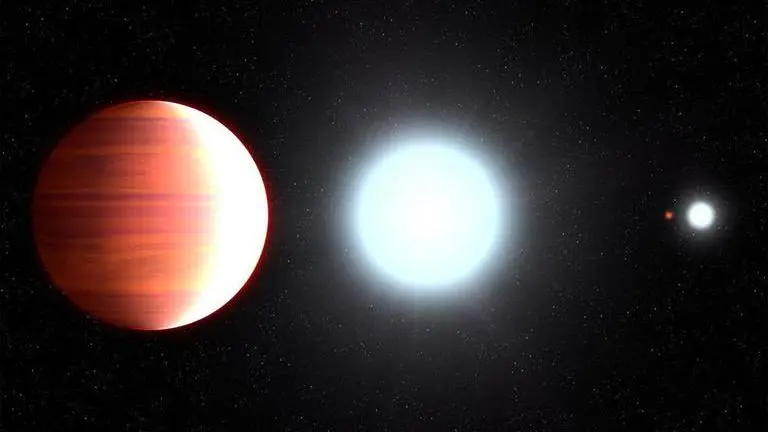Updated 19 October 2020 at 13:46 IST
Scientists discover two exoplanets orbiting closely around a red dwarf star
A study published by the University of Bern, reveals that astronomers have spotted 2 peculiar exoplanets orbiting a red dwarf star. Find out.
- Science News
- 3 min read

Scientists and astronomers have recently discovered a "peculiar pair" of planets orbiting around a red dwarf star called TOI-1266. As these planets are not a part of our solar system, they’ve been deemed as exoplanets. The Mexico-based SAINT-EX telescope, which is co-operated by the NCCR PlanetS, was used to spot the planets. Read on to know more about the intriguing new worlds.
Two planets discovered orbiting a red dwarf star closely
According to a study published in Science Daily, the Mexico based telescope was the source of this discovery. The telescope is often known for its high precision and takes an important step in the quest of finding potentially habitable worlds. The red dwarf star that these planets are orbiting is reportedly cooler than our Sun.
The thing about cool stars such as TOI-1266 is that they allow liquid water to exist, even in the planets that are closest to them. Hence, TOI-1266 b and c might be habitable worlds. The distance between an exoplanet and its star is a crucial factor for theorising or detecting the presence of water. The star itself is around 120 light-years away from Earth.
Advertisement
The source of this study is the research conducted by astronomers at the University of Bern. It further suggests that the outer planet has approximately the same temperature as Venus, even though it is 7 times closer to its star than Venus is to the Sun. TOI-1266 b and c are so close to their star that it takes them only 11 and 19 days respectively to orbit it.
Advertisement
What are these two peculiar exoplanets like?
Brice-Olivier Demory is the lead author of the study and a Professor of Astrophysics at the University of Bern. He explains that both the planets are of similar density. They are quite possibly composed of about a half of rocky and metallic material and half water. This makes them half as rocky as Earth or Venus but also far rockier than Uranus or Neptune.
However, in terms of size, these planets differ starkly. The inner planet, TOI-1266 b, measures up to a little under two-and-a-half times the Earth's diameter, while the outer planet, TOI-1266 c, is just over one-and-a-half times the size of our planet, it thus belongs to the category of Super-Earth. Yilen Gómez Maqueo Chew, SAINT-EX Project Coordinator and researcher at the National Autonomous University of Mexico has stated in the study that being able to study two different types of planets in the same system is a great opportunity to understand how these different sized planets came into existence.
What are Exoplanets?
According to NASA, planets beyond our solar system that orbit around other stars are called exoplanets. Exoplanets are very hard to spot as, more than often they are hidden behind the super bright glare of the stars they orbit. Therefore, astronomers search for exoplanets by looking at the effects these planets have on the stars they orbit around. For instance, by observing how the brightness of the star changes during transit, astronomers can analyse and predict the size of the planet.
Image Source: NASA
Published By : Disha Kandpal
Published On: 19 October 2020 at 13:46 IST
